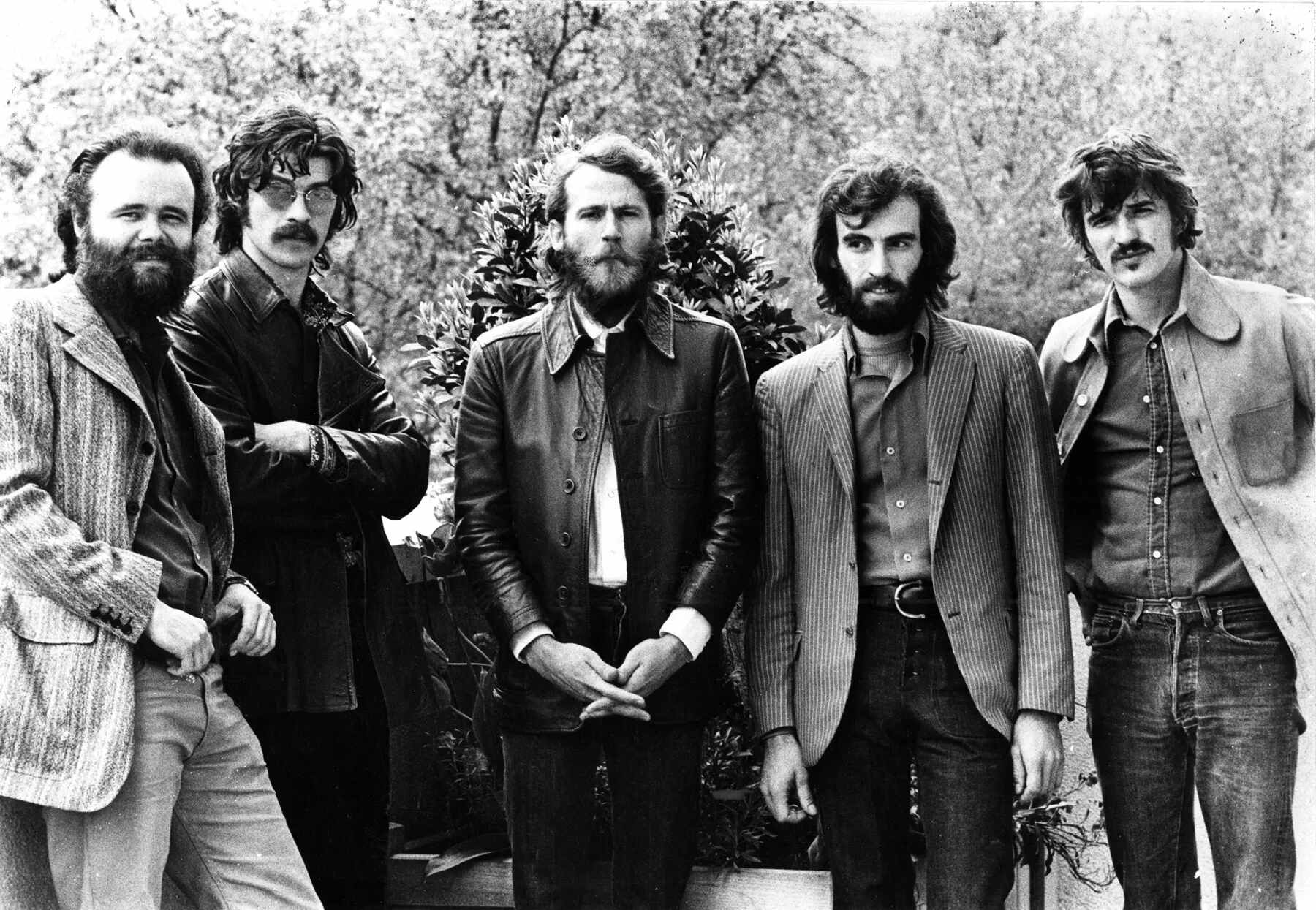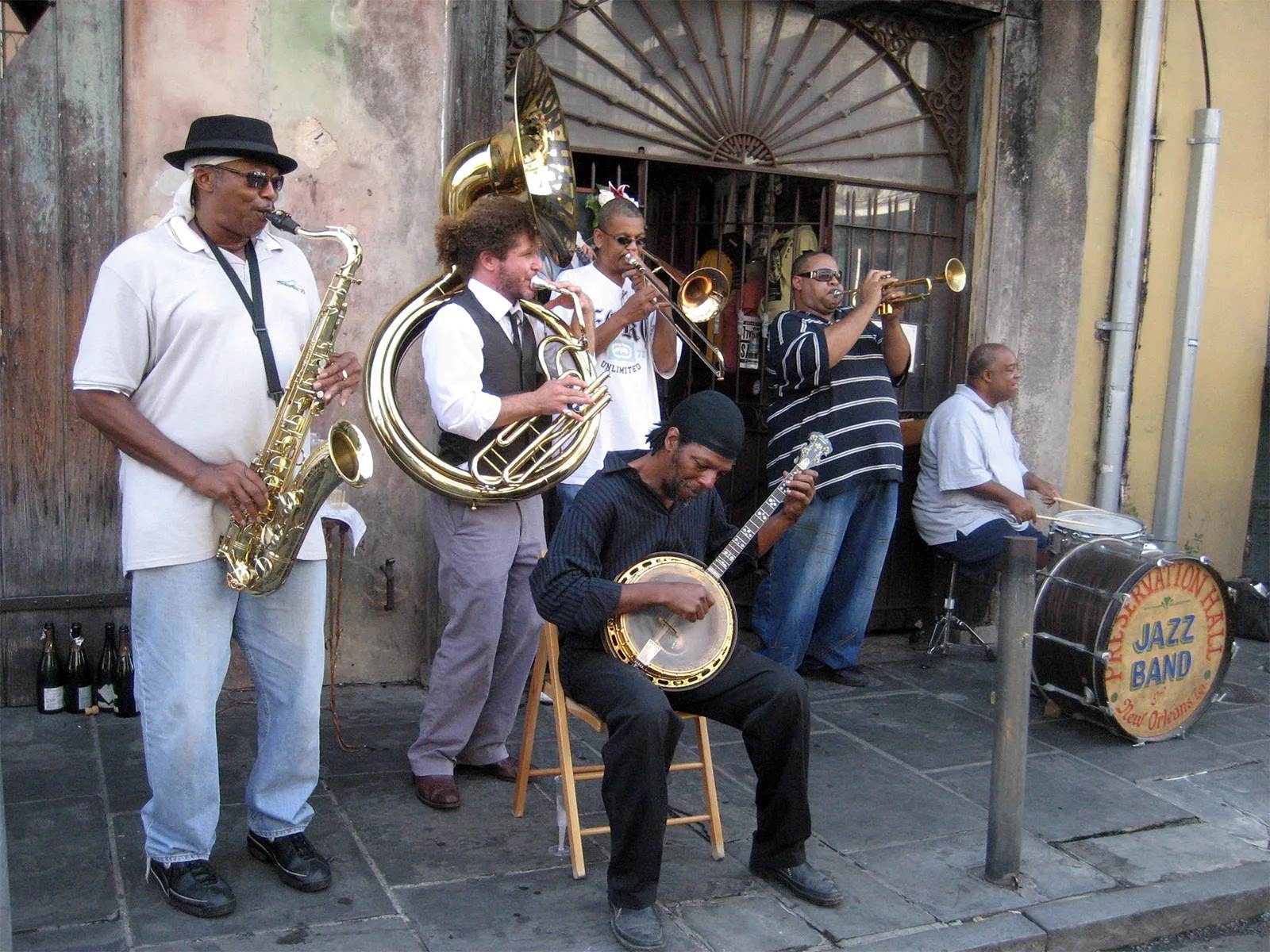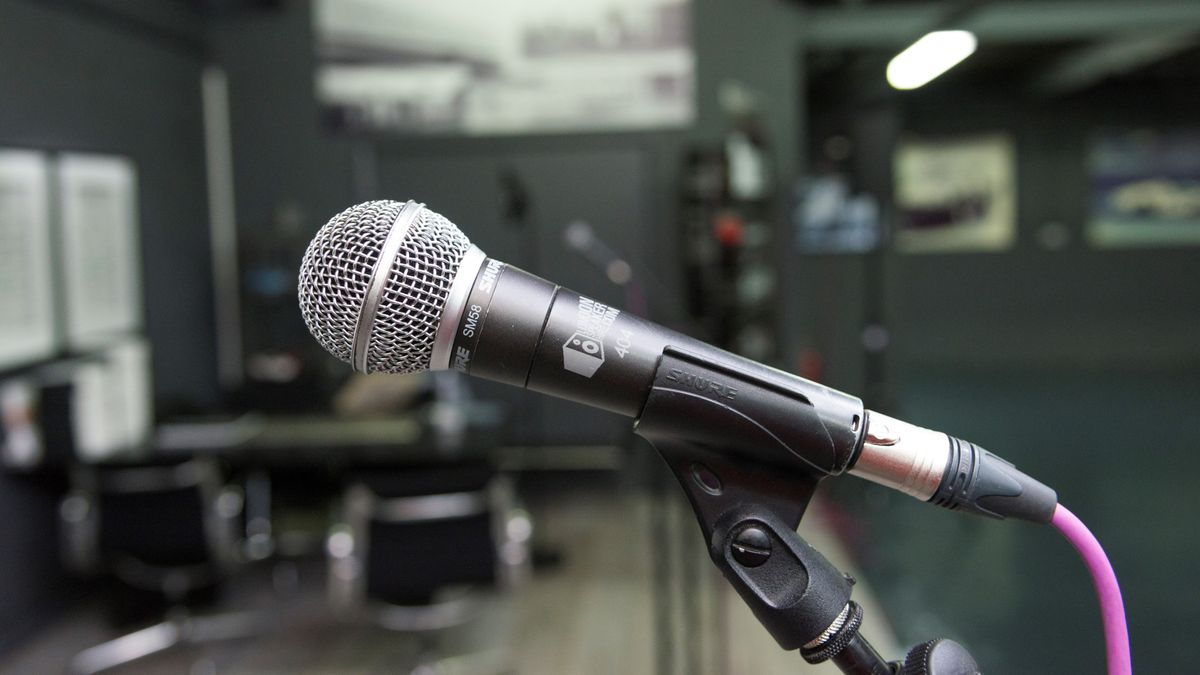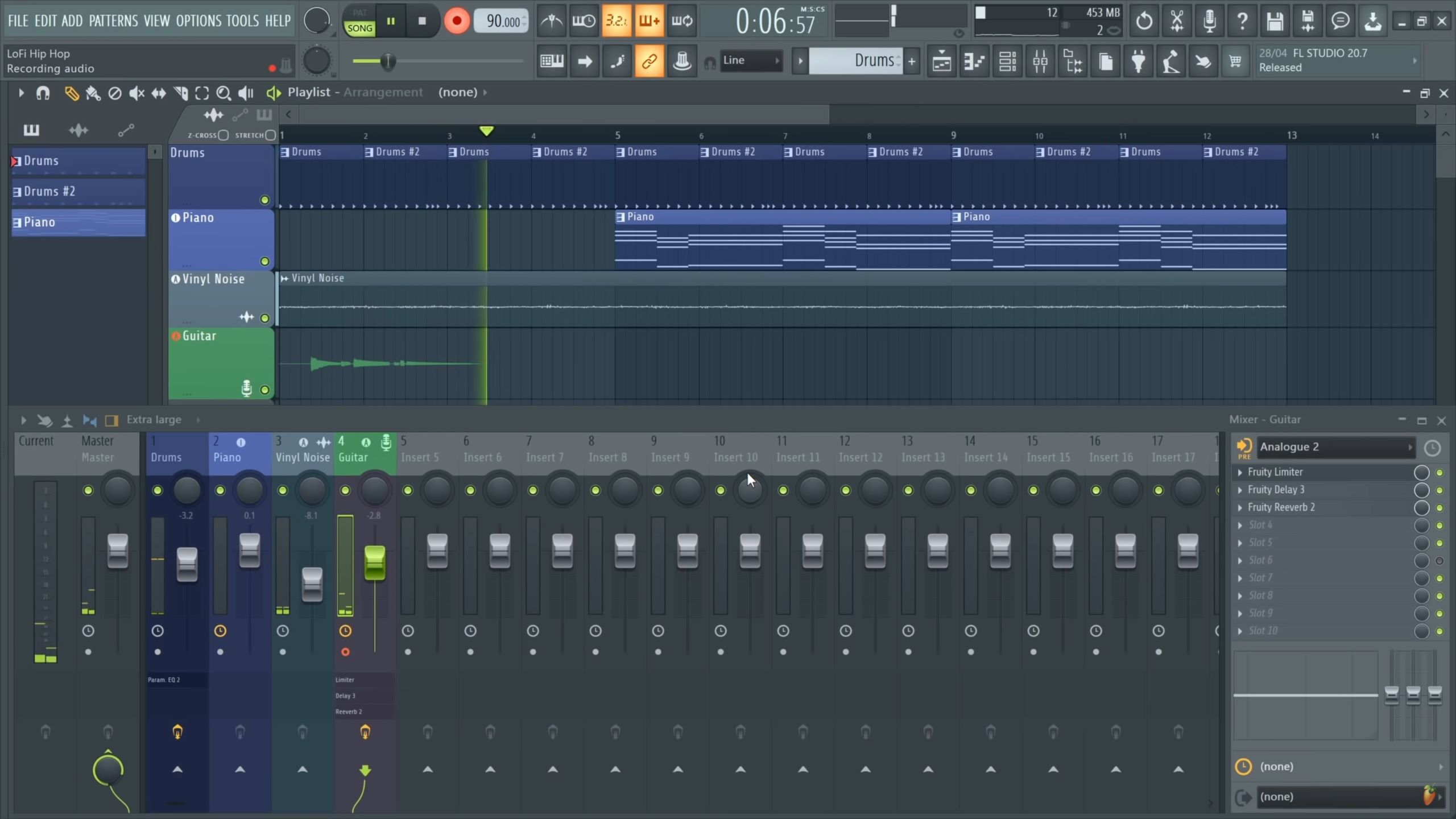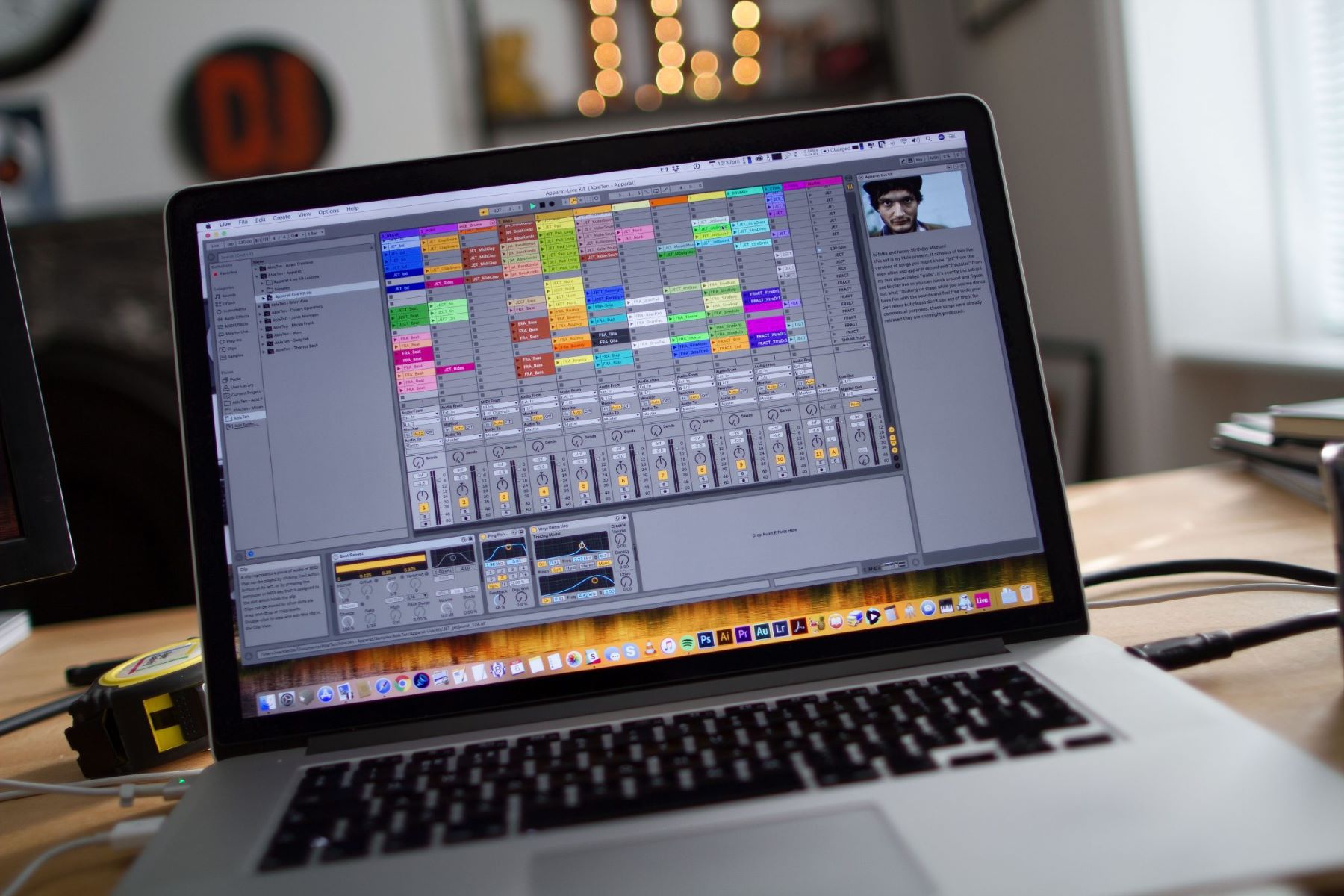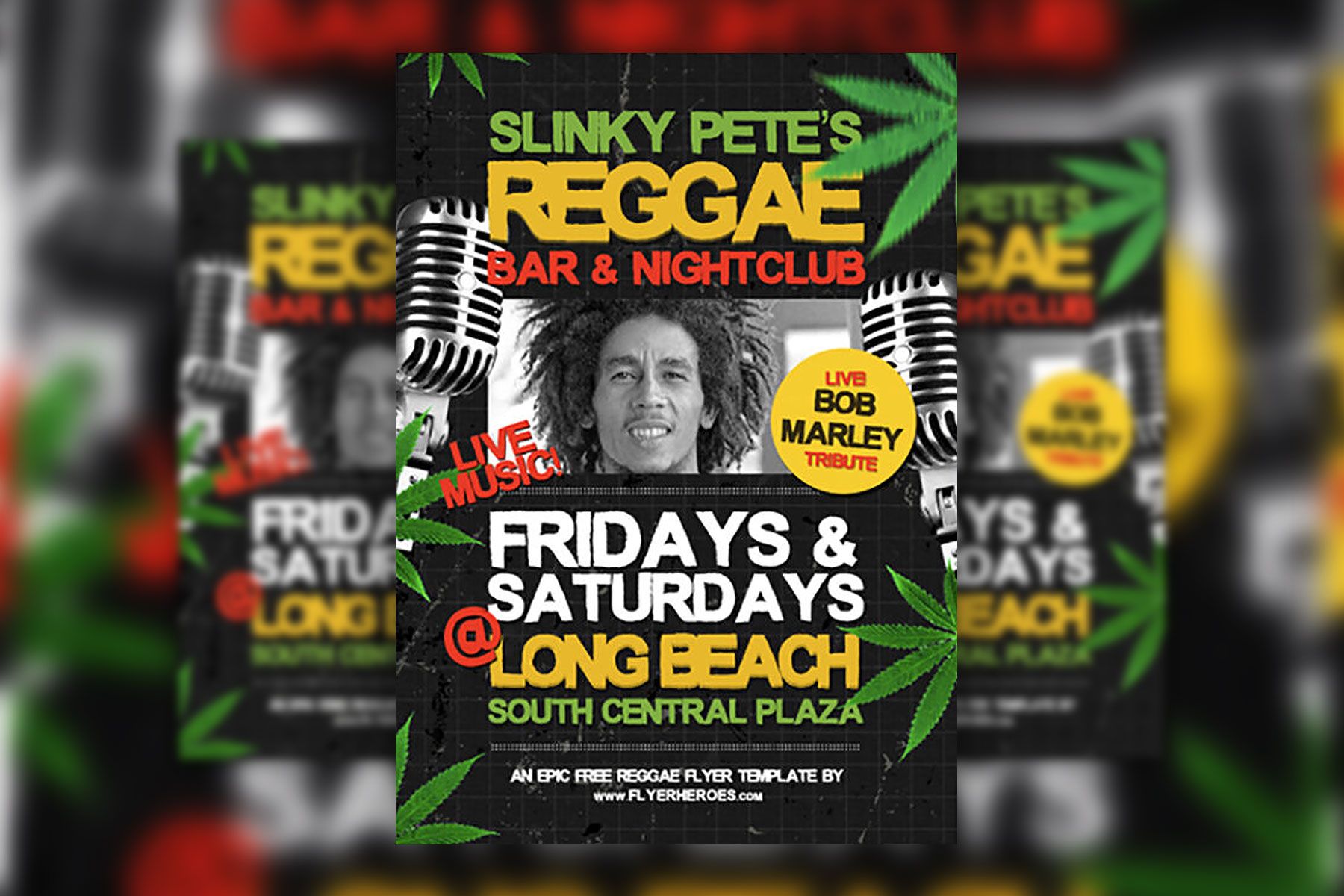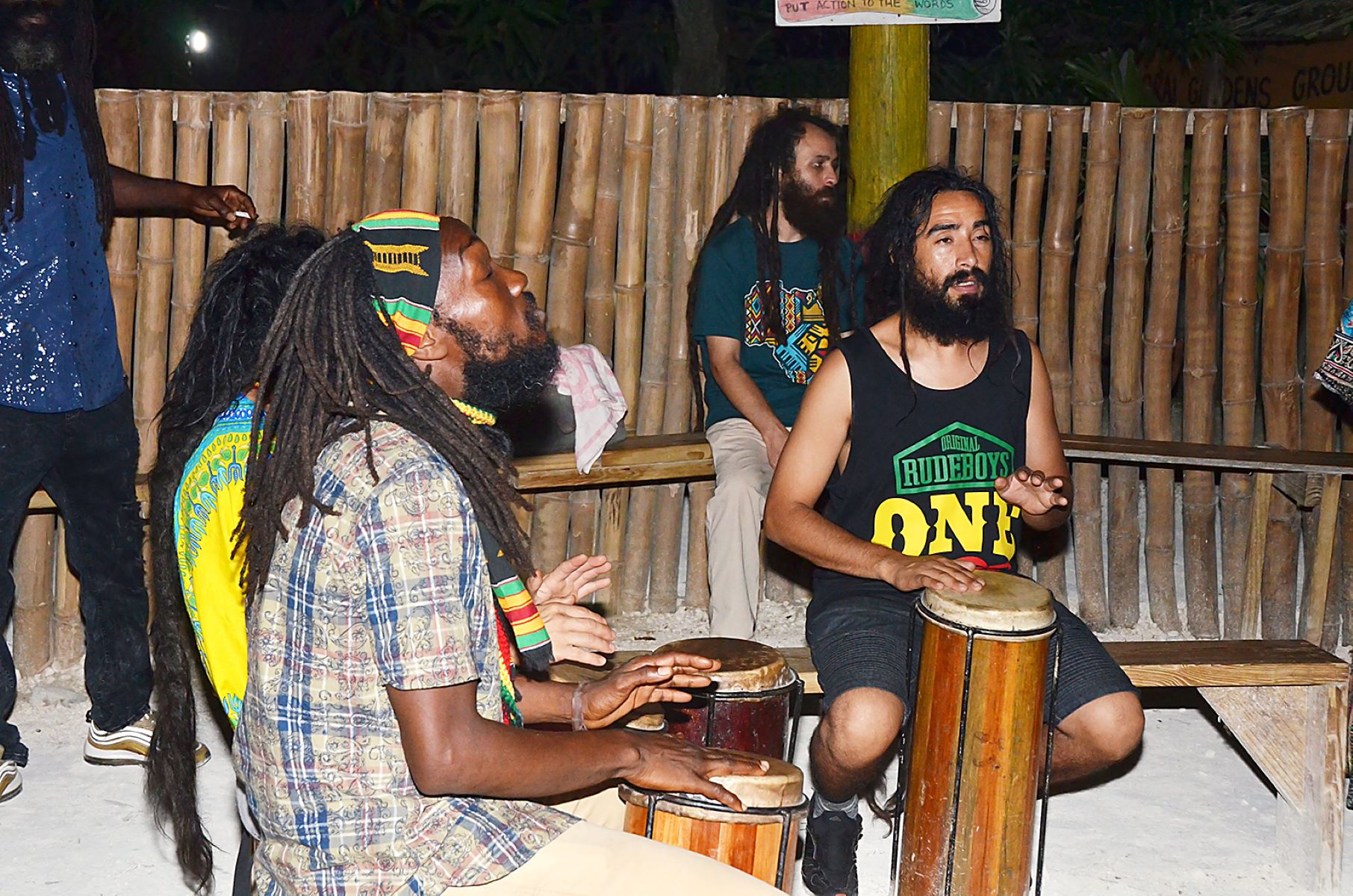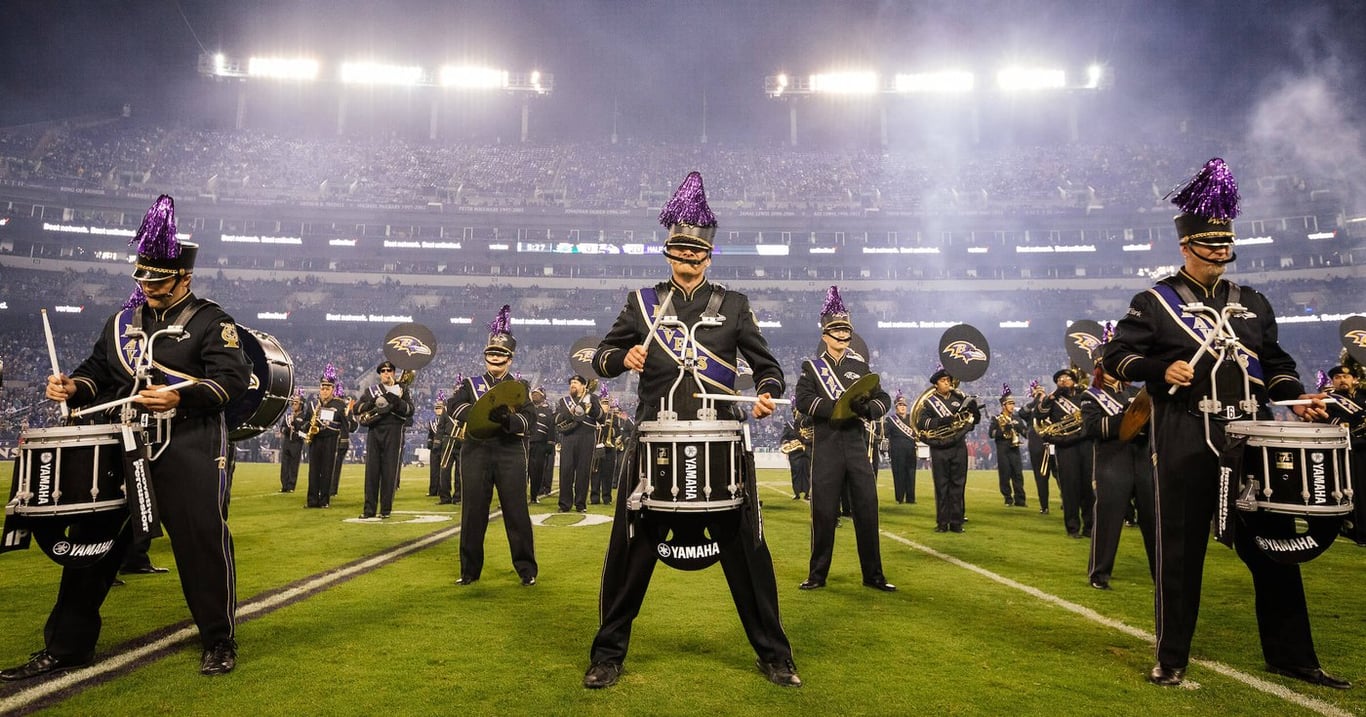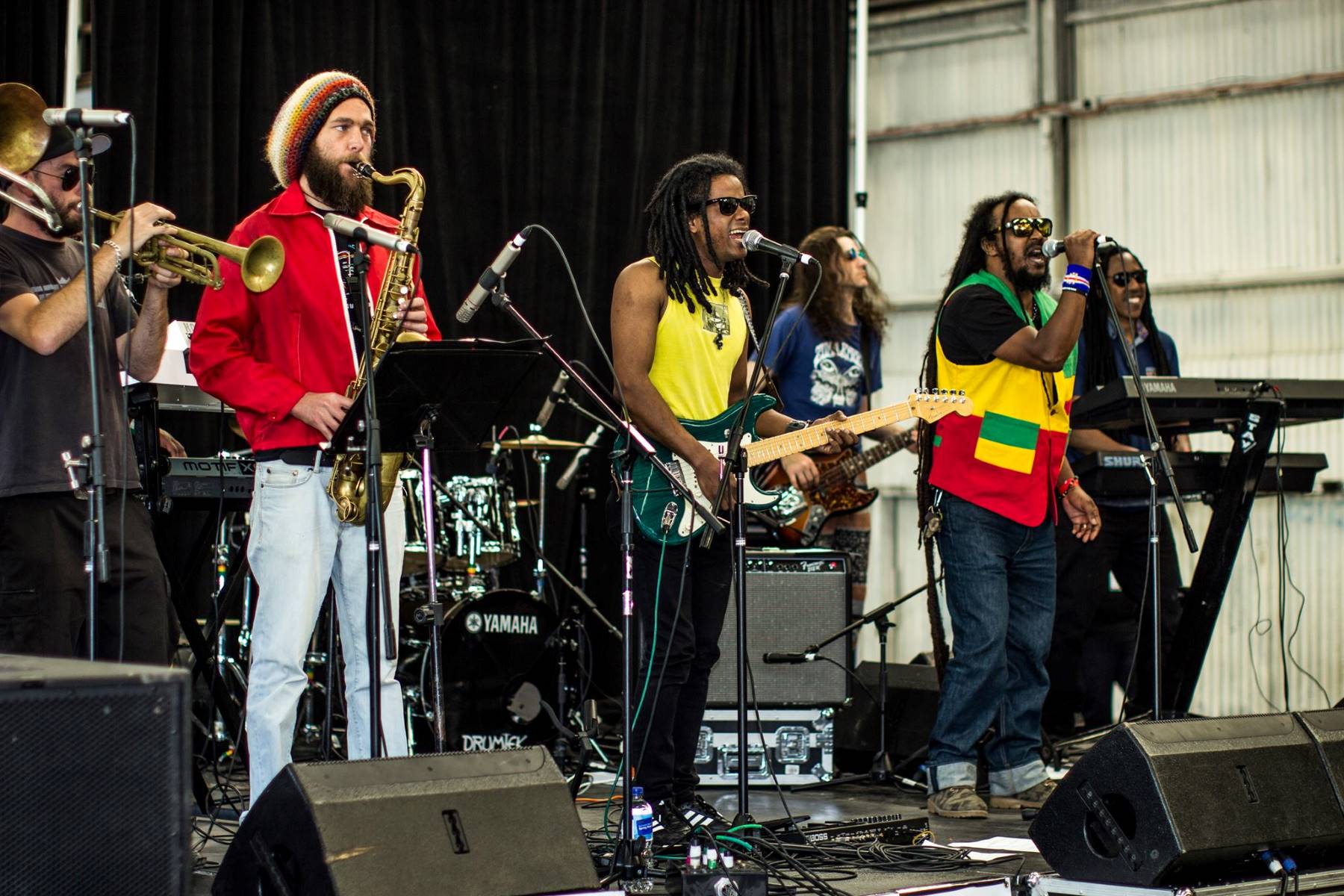

Reggae
How To Succeed In A Reggae Band
Modified: March 8, 2024
Learn the secrets of success in the reggae music industry and thrive in your own reggae band. Discover key strategies, tips, and techniques to elevate your reggae music career.
(Many of the links in this article redirect to a specific reviewed product. Your purchase of these products through affiliate links helps to generate commission for AudioLover.com, at no extra cost. Learn more)
Table of Contents
- Introduction
- Finding Your Musical Style
- Building a Strong Rhythm Section
- Mastering Reggae Grooves
- Understanding the Importance of Dub and Versioning
- Incorporating Melodic Elements
- Lyrics and Vocal Delivery
- Creating Engaging Live Performances
- Developing a Unique Band Identity
- Networking and Promoting Your Band
- Dealing with Challenges and Conflict
- Conclusion
Introduction
Welcome to the world of reggae music! Known for its infectious rhythms, uplifting lyrics, and soulful melodies, reggae has captivated audiences around the globe for decades. From the sunny shores of Jamaica to the stages of international music festivals, reggae has become a genre that transcends cultural boundaries and brings people together.
If you have a passion for reggae music and dream of starting or joining a reggae band, you’ve come to the right place. In this article, we will explore the essential steps to succeeding in the reggae music scene. Whether you’re a musician, vocalist, or aspiring band manager, we’ll provide you with valuable insights to help you navigate the journey ahead.
Reggae music is deeply rooted in the rich cultural heritage of Jamaica. It emerged in the late 1960s and early 1970s, fusing elements of traditional Jamaican music with influences from rhythm and blues, jazz, and rocksteady. The genre gained international recognition through the iconic music of Bob Marley and The Wailers, and has since evolved into various sub-genres and styles.
Being successful in a reggae band requires more than just talent; it requires a deep understanding and appreciation of the genre’s unique characteristics. From the distinctive rhythm patterns to the conscious and socially relevant lyrics, reggae music carries a powerful message and an undeniable groove.
In the following sections, we will delve into the key aspects of creating a successful reggae band. We’ll cover topics such as finding your musical style, building a strong rhythm section, mastering reggae grooves, incorporating melodic elements, and developing a unique band identity. We will also provide insights on lyrics and vocal delivery, creating engaging live performances, networking, and promoting your band.
Starting a reggae band is an exciting and rewarding endeavor. It offers an opportunity to express your creativity, connect with like-minded musicians, and share your love for reggae music with the world. So, let’s dive in and discover how you can make your mark in the vibrant world of reggae music!
Finding Your Musical Style
When it comes to reggae music, the style and sound of your band play a significant role in shaping your identity. While reggae has a distinct sound, there are various sub-genres and styles within the genre that you can explore and make your own. This is an opportunity to blend your unique musical influences and personal flair with the essence of reggae.
Start by immersing yourself in the different sub-genres of reggae, such as roots reggae, dub, dancehall, and reggae fusion. Listen to the works of legendary reggae artists like Bob Marley, Peter Tosh, Burning Spear, and Toots & the Maytals to gain inspiration and a deeper understanding of the genre.
As you explore reggae music, pay attention to the rhythmic patterns, the role of the bassline, and the distinct guitar and keyboard styles. Additionally, take note of the lyrical themes and the overall vibe created by the instrumentation and vocal delivery.
Once you have a solid foundation in reggae, start experimenting with your own unique musical influences. Consider incorporating elements from other genres such as jazz, funk, rock, or world music. This fusion will give your band a distinct sound and help you stand out in the reggae music scene.
Collaboration is key when it comes to finding your musical style. Work closely with your bandmates to explore different musical ideas and experiment with different sounds. Encourage everyone to contribute their individual musical backgrounds and influences, creating a collaborative and diverse musical palette.
Remember, finding your musical style is a journey of self-discovery. It takes time and experimentation to develop a sound that truly represents your band. Be open to feedback, embrace creative exploration, and allow your musical style to evolve organically.
As you refine your musical style, keep in mind that authenticity is crucial in reggae music. Stay true to the core elements of reggae, such as its social consciousness, uplifting messages, and infectious grooves. Strive to create a sound that pays homage to reggae’s roots while pushing the boundaries and infusing your personal creative expression.
By finding your unique musical style, you’ll not only attract a dedicated fan base but also establish a strong foundation for your band’s longevity and success in the reggae music industry.
Building a Strong Rhythm Section
In reggae music, the rhythm section is the heartbeat of the band. It consists of the drummer, bassist, and keyboard player, and is responsible for creating the infectious grooves that define the genre. Building a strong rhythm section is essential for any reggae band’s success.
One of the key elements of reggae music is its heavy emphasis on the bassline. The bass provides the foundation and drive for the music, creating the iconic “one drop” rhythm that is synonymous with reggae. It’s crucial to have a skilled and versatile bassist who can lock in with the drummer and hold down the groove.
The drummer in a reggae band plays a vital role in creating the rhythmic patterns that give the music its distinctive feel. The drum patterns in reggae are often characterized by a steady kick drum on the first and third beat, accompanied by a syncopated snare on the third beat. The drummer should have a solid sense of timing and the ability to maintain a consistent tempo throughout the performance.
Alongside the bass and drums, the keyboard player adds depth and texture to the music. They can provide melodic accents, harmonic progression, and create atmospheric sounds using various keyboard instruments like the organ, piano, and synthesizers. A skilled keyboardist can elevate the overall sound of the rhythm section and add additional layers to the reggae grooves.
Building a strong rhythm section requires more than individual skill; it requires strong communication and teamwork. The members of the rhythm section must listen and respond to each other, creating a cohesive and tight sound. Regular rehearsals and jam sessions are essential for developing this musical connection.
When assembling your rhythm section, look for musicians who have a deep understanding of reggae music and a passion for its unique rhythm styles. Seek out individuals who can bring their own creative ideas and contribute to the band’s musical growth.
Collaboration and experimentation are key in building a strong rhythm section. Encourage the drummer, bassist, and keyboard player to explore different rhythmic patterns, grooves, and improvisations. This will add spontaneity and keep the music fresh and dynamic.
Remember, the rhythm section sets the foundation for the rest of the band. With a solid and tight rhythm section, the other members of the band, such as guitarists and vocalists, can build upon this foundation and create an unforgettable reggae sound.
Mastering Reggae Grooves
When it comes to reggae music, the grooves are what make the genre so captivating and infectious. From the one-drop rhythm to the skanking guitar, mastering reggae grooves is essential for creating an authentic and engaging sound.
The one-drop rhythm is a fundamental groove in reggae music. It emphasizes the second and fourth beats of each measure, creating a laid-back and relaxed feel. The drummer plays a crucial role in executing the one-drop rhythm, subtly accentuating the offbeats while keeping a steady pulse. To master this groove, the drummer needs a solid sense of time and a keen ear for rhythmic subtleties.
Another essential component of reggae grooves is the skank guitar. The skank guitar provides the rhythmic backbone of the music, playing repetitive and percussive chords on the upbeats. It adds a percussive element to the music and creates a sense of syncopation. The guitarist must learn how to palm mute the strings, creating a muted and staccato sound that defines the reggae groove.
The bassline in reggae music is often simple yet powerful, locking in with the drummer and providing a driving force behind the groove. The bassist should focus on playing solid root notes and incorporating occasional melodic fills to add interest to the rhythm. It’s essential for the bassist to have a good understanding of the relationship between the bassline and the other elements of the rhythm section, ensuring a tight and cohesive sound.
In addition to the core elements of the rhythm section, other instruments such as keyboards and percussion play a role in enhancing the reggae grooves. Keyboardists can add melodic accents and create atmospheric sounds, while percussionists can provide additional rhythmic textures and fills.
Mastering reggae grooves requires practice, patience, and attention to detail. It’s important to listen closely to reggae recordings by legendary artists and study how they create their grooves. Pay attention to the subtle variations in timing, dynamics, and accents that make the grooves come alive.
Additionally, it’s helpful to practice with a metronome or drum machine to develop a solid sense of timing and improve your rhythmic precision. Focus on getting comfortable with the syncopation and feel of reggae grooves, gradually increasing the tempo as you progress.
As you master reggae grooves, don’t be afraid to incorporate your personal style and improvisations. Reggae music is all about expression and individuality. Experiment with different variations, fills, and rhythmic patterns to add your own flavor to the grooves.
Ultimately, mastering reggae grooves is a continuous journey of exploration and refinement. Embrace the spirit of the music, pay attention to the nuances, and let the grooves take you on a rhythmic journey like no other.
Understanding the Importance of Dub and Versioning
When exploring the world of reggae music, it is essential to understand the significance of dub and versioning. These innovative techniques have played a crucial role in shaping the genre and have had a lasting impact on the evolution of reggae.
Dub emerged in the 1960s as a unique form of remixing and production within reggae music. It involves manipulating the original recordings by emphasizing certain elements, adding effects, and creating new layers of instrumentation. Dub music often features heavy use of delay, reverb, and other audio effects, creating a spacious and hypnotic sonic experience.
One of the pioneers of dub was King Tubby, a Jamaican sound engineer known for his groundbreaking experiments. He would strip away vocals, emphasize the bass and drums, and incorporate echo and other effects to create a new version of the original song. Dub became a genre of its own, with instrumental tracks and dub remixes of popular reggae songs gaining popularity.
Dub allowed musicians and producers to showcase their creativity and sonic experimentation. It became a platform for experimentation with studio technology and introduced reggae music to a whole new audience. Dub has influenced various musical genres, including electronic music, hip hop, and even punk rock.
Versioning is another important aspect of reggae music. It involves creating instrumental versions of popular songs, allowing different artists to add their own interpretations. In versioning, the focus is on the musical arrangements, allowing musicians to showcase their skills and explore new melodies and solos.
The concept of versioning created a collaborative environment in which musicians could reinterpret and reimagine existing reggae tracks. This practice fostered creativity and promoted the exchange of ideas within the reggae community.
Both dub and versioning have had a significant impact on the development of reggae music. They have pushed the boundaries of what was considered traditional reggae and opened doors to experimentation and innovation. Dub and versioning have given artists the freedom to express themselves artistically and have expanded the sonic possibilities within the genre.
Understanding the importance of dub and versioning is crucial for any aspiring reggae musician or band. It provides a deeper appreciation for the roots of the genre and inspires creativity in your own musical endeavors. Whether it’s adding dub elements to your recordings, remixing your own tracks, or incorporating instrumental versions into your live performances, embracing dub and versioning can elevate your reggae music to new heights.
Incorporating Melodic Elements
In reggae music, the melodic elements play a vital role in enhancing the overall sound and creating memorable compositions. While the rhythm section forms the foundation, it is the melodic elements that add depth, emotion, and hooks to the music.
One of the key melodic elements in reggae is the use of guitar or keyboard melodies. These melodic hooks can be catchy and instantly recognizable, creating memorable moments in a song. The guitarist or keyboardist can contribute melodic lines that complement the vocals or play counterpoint to the main rhythm. These melodies can add an extra layer of interest and create a signature sound for the band.
In addition to instrumental melodies, reggae music often features vocal harmonies and melodic hooks. Vocals play a crucial role in conveying the message of the lyrics and connecting with the listeners on an emotional level. Focus on creating strong vocal melodies that are singable and resonate with the listeners. Harmonies can add depth and richness to the overall sound, creating a more captivating and harmonically complex composition.
When incorporating melodic elements in reggae, it’s important to strike a balance between simplicity and complexity. The melodies should be accessible and catchy, yet nuanced enough to keep listeners engaged. Experiment with different scales and modes that are commonly used in reggae music, such as the pentatonic scale or the Mixolydian mode. These scales have a distinct sound and can add a reggae flavor to your melodies.
Another way to incorporate melodic elements is through the use of horns or other instrumental solos. The addition of brass instruments like trumpet, trombone, or saxophone can bring a vibrant and dynamic element to the music. These instruments can play melodic solos, inject improvisation, or provide melodic interjections throughout the songs. The horn section can add a powerful and energetic presence to your live performances, taking the music to another level.
When incorporating melodic elements, it’s important to consider dynamics and arrangement. Experiment with different instrument combinations, subtle instrumental breaks, and build-ups to create a sense of tension and release within the music. Allow the melodies to breathe and evolve, weaving in and out of the rhythmic elements, creating a harmonious blend of sound.
Ultimately, the key to incorporating melodic elements in reggae music is to let your creativity shine while staying true to the core elements of the genre. Find ways to infuse your unique musical style and influences into the melodies, creating a distinctive and memorable sound. The melodic elements in reggae music have the power to touch hearts, uplift spirits, and create a lasting impact on listeners.
Lyrics and Vocal Delivery
When it comes to reggae music, the lyrics and vocal delivery play a significant role in conveying powerful messages and connecting with listeners on a deeper level. Reggae lyrics are often conscious, addressing social and political issues, personal struggles, and messages of love and unity.
When writing reggae lyrics, it’s important to focus on authenticity and staying true to the spirit of the genre. Explore topics that are meaningful to you and resonate with the reggae ethos of social justice, equality, and positivity. Use your lyrics to tell stories, raise awareness, and inspire positive change.
Craft your lyrics with intention and purpose, choosing words that are impactful and emotionally resonant. Take inspiration from reggae icon Bob Marley, whose lyrics often touched upon themes of social liberation and spiritual awakening. Use metaphors, imagery, and clever wordplay to engage and captivate your audience.
In reggae music, vocal delivery is key to conveying the emotions and messages of the lyrics effectively. It’s important to develop your vocal skills and find a style that suits your voice and the vibe of the music. Experiment with different vocal techniques, from soulful and smooth to gritty and passionate, to add depth and character to your performances.
Focus on clarity and enunciation, as reggae lyrics often carry significant meaning. Practice articulating your words clearly while maintaining a natural flow, ensuring that your messages are understood by listeners. Use dynamics, such as varying your vocal volume and intensity, to add emphasis and evoke emotion in your delivery.
Incorporate vocal harmonies to add richness and depth to your sound. Harmonies can enhance the overall impact of the lyrics and create a sense of unity within your band’s vocal arrangements.
When performing live, engage with your audience and create a connection through your vocal delivery. Use your voice to convey the passion and energy of the music, encouraging the crowd to participate, sing along, and feel the collective spirit of the reggae experience.
It’s important to note that vocal delivery goes beyond technical proficiency. It’s about infusing your voice with genuine emotion and expressing the essence of the lyrics. Connect with the meaning behind the words, and let your vocal delivery be an authentic representation of your beliefs and emotions.
Lastly, continue to nurture and develop your vocal skills through practice and vocal exercises. Work on breath control, vocal range, and tone control to achieve the desired expressiveness and versatility in your vocal delivery.
With thoughtful lyrics and a captivating vocal delivery, you can use your voice as a powerful instrument to inspire change, evoke emotions, and create a lasting impact within the reggae music scene.
Creating Engaging Live Performances
Live performances are at the heart of reggae music. They offer an opportunity to connect with your audience, spread positive vibes, and create an unforgettable experience. To create engaging live performances, it’s essential to focus on energy, stage presence, and creating a captivating atmosphere.
One of the key elements of a successful reggae live performance is the energy you bring to the stage. Embrace the spirit of reggae music, let loose, and give it your all. Engage with the audience, interact with band members, and let the music flow through you, creating a vibrant and infectious energy that will resonate with the crowd.
Stage presence is also crucial in captivating the audience. Work on your body language and movement on stage. Be confident, charismatic, and authentic in your performance. Whether it’s dancing, swaying to the rhythm, or engaging with the crowd, let your presence radiate your passion for reggae music.
Incorporate visual elements to enhance the live experience. Consider your band’s attire and stage setup. Dress in a way that represents the reggae culture or reflects your band’s unique style. Utilize stage lighting, visuals, and projections to create an immersive and visually captivating atmosphere, elevating the overall impact of the performance.
Another aspect to consider is the flow of your live set. Plan a well-structured and dynamic progression of songs to keep the audience engaged from start to finish. Consider the arrangement of slow and mellow songs alongside high-energy tracks to create a balanced and captivating experience.
Encourage audience participation and interaction throughout the performance. Reggae music has a strong communal spirit, so foster a sense of togetherness by inviting the crowd to sing along, clap their hands, or dance together. This creates a shared experience and connection with your audience.
Don’t be afraid to incorporate instrumental solos and extended jams into your live performances. This allows your band members to showcase their individual talents and adds an element of improvisation and spontaneity to the performance. Such moments can create exciting climaxes and keep the audience engaged and wanting more.
Lastly, aim to leave a lasting impression with your live performances. Incorporate unique elements that make your band stand out, such as incorporating guest musicians, incorporating multimedia elements, or presenting surprise collaborations. These unexpected moments can create a sense of excitement and make your performances memorable.
Remember, every live performance is an opportunity to connect with your audience and share the love of reggae music. Show your passion, engage with the crowd, and create an atmosphere that resonates with the spirit of reggae. Through engaging live performances, you can create a loyal fan base and leave a lasting impact in the reggae music scene.
Developing a Unique Band Identity
In the crowded world of reggae music, developing a unique band identity is crucial for standing out and making a lasting impression. It’s about creating a distinct brand that reflects your music, style, and values. Here are some essential steps to help you develop a unique band identity.
Start by defining your band’s vision and mission. What do you want to achieve with your music? What message do you want to convey? Having a clear purpose and direction will guide your artistic decisions and help shape your band’s identity.
Next, focus on your musical style and sound. Explore different influences, experiment with musical elements, and find your own unique blend within the reggae genre. This can be a fusion of sub-genres, incorporating elements from other genres, or infusing your cultural heritage into the music. Strive to create a sound that is instantly recognizable as your own.
Create a compelling visual identity that captures the essence of your band. This includes your band name, logo, album artwork, and merchandise. Work with a graphic designer to develop a cohesive and eye-catching visual identity that aligns with your music and resonates with your target audience.
Invest time in developing an engaging online presence. Create a professional website and establish a strong presence on social media platforms that cater to your target audience. Share behind-the-scenes content, promote your music, and interact with your fans regularly. Consistency and authenticity are key in building a loyal fan base.
Consider your band’s image and stage presence. Develop a style that reflects your music and resonates with your audience. This can be through your clothing, hairstyles, and overall appearance. Be intentional and authentic in how you present yourselves as a band, aligning your image with your musical identity.
Craft a compelling band biography that tells your story, highlights your musical journey, and connects with your audience on a personal level. Let your fans get to know you beyond the music. Share your inspirations, challenges, and the values that drive your music.
Collaborate with other artists and musicians to broaden your exposure and expand your network. Seek opportunities to collaborate on projects, perform at events and festivals, and engage with other musicians within and outside the reggae community. These collaborations can help you reach new audiences and enhance your band’s identity.
Above all, stay true to your artistic vision and values. It’s easy to get influenced by trends or pressured to conform to industry expectations, but developing a unique band identity requires authenticity and staying true to your artistic integrity. Let your passion and creative expression guide your journey.
Remember, developing a unique band identity is an ongoing process. It evolves as your music, experiences, and perspectives evolve. Embrace the journey of self-discovery, constantly refine your identity, and strive to leave a distinctive mark in the reggae music scene.
Networking and Promoting Your Band
Networking and promotion are essential for gaining visibility and recognition in the competitive music industry. To effectively promote your reggae band, you should focus on building connections, leveraging online platforms, and creating a compelling promotional strategy.
Start by reaching out to fellow musicians, industry professionals, and local/regional reggae music communities. Attend events, open mics, and concerts to meet like-minded individuals. Networking with other artists can lead to collaborative opportunities, shared gigs, and increased exposure for your band.
Utilize online platforms to showcase your music and engage with your audience. Create professional profiles on social media platforms like Instagram, Facebook, Twitter, and YouTube. Regularly share updates, behind-the-scenes content, live performances, and music videos to keep your fans engaged and attract new followers.
Create a visually appealing and user-friendly website that serves as a hub for all your band’s information, music, and upcoming events. Include a professional biography, high-quality photos, and links to your social media profiles and music streaming platforms. Make it easy for fans and industry professionals to find and engage with your content.
Submit your music to online radio stations, reggae blogs, and streaming playlists. Research platforms that cater specifically to reggae music and submit your tracks for potential airplay and feature placements. This can help you reach a wider audience and gain credibility within the reggae music community.
Collaborate with popular reggae DJs and producers who have a strong following. Featuring your music on their mixes or albums can provide valuable exposure and introduce your band to new listeners. Additionally, consider creating remixes or having your tracks remixed by other artists in the reggae community, which can help expand your reach.
Actively seek performance opportunities at venues, festivals, and reggae events. Reach out to booking agents and event organizers, submit applications for festivals, and consider hosting your own shows or organizing reggae-themed events. Engaging in live performances is an excellent way to connect with fans and gain new supporters.
Stay engaged with your fan base by responding to comments, messages, and emails. Encourage interaction by hosting Q&A sessions on social media or creating fan competitions. Building authentic connections with your fans can lead to loyal supporters who will spread the word about your music and attend your shows.
In terms of promotion, consider creating eye-catching posters, flyers, and merchandise to distribute at your shows, local record stores, and music festivals. Engage with local media outlets, newspapers, and online publications to secure interviews, reviews, and features about your band.
Lastly, never underestimate the power of word-of-mouth marketing. Encourage your fans to share your music, attend your shows, and invite their friends. Offer incentives like free downloads or exclusive content to fans who refer new listeners or help promote your music.
Networking and promotion require consistent effort and a willingness to put yourself out there. Be proactive, creative, and persistent in your approach. With the right connections and a well-executed promotional strategy, you can significantly increase your band’s visibility and create opportunities for success in the reggae music industry.
Dealing with Challenges and Conflict
Like any creative endeavor, being in a reggae band comes with its fair share of challenges and potential conflicts. From creative differences to logistical hurdles, addressing these challenges in a proactive and open-minded way is essential for the long-term success and harmony of the band.
One common challenge is managing creative differences among band members. Each individual brings their unique musical style and preferences to the table, which can sometimes lead to disagreements about song arrangements, musical direction, or even lyrical content. It’s crucial to foster open and respectful communication within the band, allowing everyone to voice their opinions and find common ground. Remember that compromise and collaboration are key to creating a cohesive and authentic sound.
Another challenge is balancing individual ambitions with the collective goals of the band. As musicians, it’s natural to have personal aspirations and dreams. However, it’s important to maintain a collective vision for the band and ensure that individual objectives align with the overall goals. Regular band meetings and discussions can help address individual concerns and find a balance that benefits everyone.
Logistical challenges, such as organizing rehearsals, booking gigs, and managing finances, can also arise. This is where effective band management and communication become crucial. Assigning specific responsibilities to band members, using shared calendars or project management tools, and maintaining transparent financial records can help navigate these challenges smoothly and ensure everyone is on the same page.
Conflicts may also arise during the creative process or during live performances, especially when it comes to decision-making regarding song selection, solos, or stage arrangements. It’s important to approach conflicts with empathy, active listening, and a willingness to find a resolution that respects everyone’s perspectives. Engaging in constructive discussions and seeking compromises can help maintain a harmonious and collaborative environment within the band.
In addition to external challenges, personal challenges and conflicts can affect band dynamics. It’s crucial to create a supportive and understanding environment where bandmates are comfortable discussing personal issues or difficulties that may impact their involvement in the band. Be there for each other, offer support, and seek professional help if needed to ensure the well-being of all band members.
Ultimately, addressing challenges and conflicts requires open and honest communication, respect for each other’s opinions, and a shared commitment to the success and longevity of the band. Regular check-ins, band meetings, and a shared sense of purpose can help navigate challenges and conflicts effectively.
Remember, challenges and conflicts are an inevitable part of any creative journey. Embrace them as opportunities for growth and learning, and approach them with a positive mindset. By fostering a culture of collaboration and respect within the band, you can overcome challenges and conflicts together, strengthening your bond as a reggae family and creating music that resonates with the world.
Conclusion
Congratulations! You’ve reached the end of our comprehensive guide to succeeding in the reggae music scene. We’ve explored key aspects such as finding your musical style, building a strong rhythm section, mastering reggae grooves, understanding the importance of dub and versioning, incorporating melodic elements, focusing on lyrics and vocal delivery, creating engaging live performances, developing a unique band identity, networking, promoting your band, and navigating challenges and conflicts.
Reggae music is a powerful and influential genre that has touched the hearts of people around the world. By immersing yourself in the rich history and unique characteristics of reggae, you’re well on your way to making your own mark in the vibrant reggae community.
Remember, finding success in a reggae band requires a combination of talent, passion, perseverance, and a deep appreciation for the genre’s roots. As you embark on your journey, embrace authenticity, constantly hone your craft, and let the universal messages of love, unity, and social consciousness be the driving force behind your music.
Stay open-minded, embrace collaboration, and continually seek opportunities to learn and grow as a musician and as a band. Surround yourself with supportive and like-minded individuals who share your passion for reggae music.
Whether you’re performing in small local venues or on international stages, every opportunity is a chance to share your music and connect with others. Use your talent and artistry to spread positivity, inspire change, and uplift the hearts and minds of your audience.
Facing challenges and conflicts is inevitable, but by maintaining open communication, respect, and a shared vision, you can navigate these obstacles and emerge even stronger as a band.
Remember, success in reggae music is not measured solely by fame or fortune but by the impact you have on the world around you. Use your music to bring people together, promote positivity, and contribute to the rich legacy of reggae.
So go ahead, embrace your love for reggae, let your creativity soar, and make a lasting impression in the vibrant world of reggae music. The journey may have its ups and downs, but with perseverance, passion, and the guidance provided in this guide, you’re well on your way to realizing your dreams in the reggae music scene.


